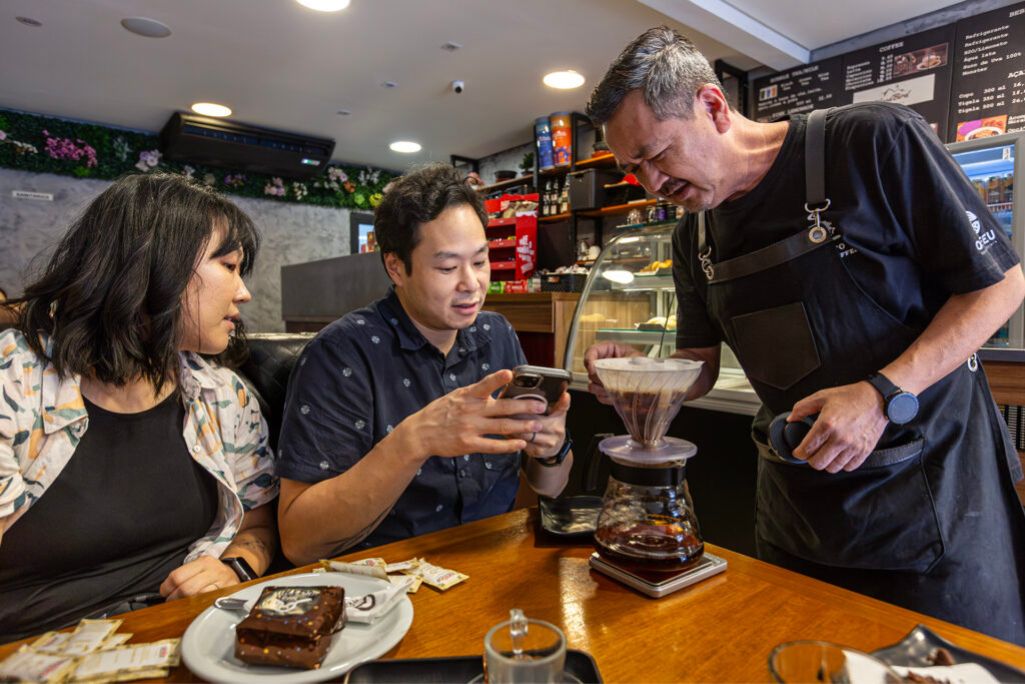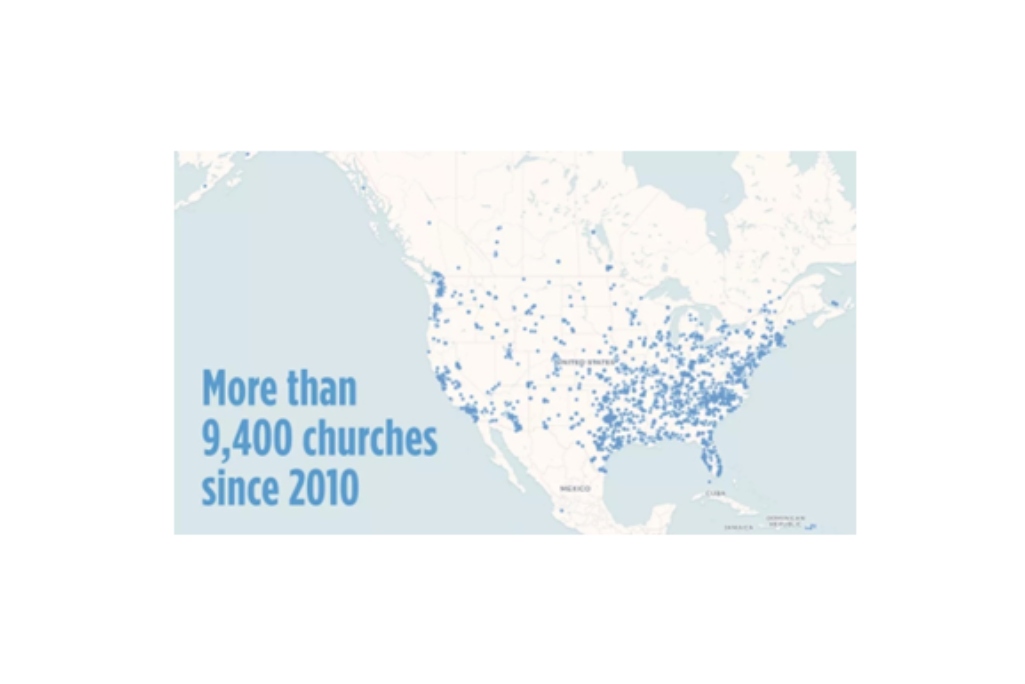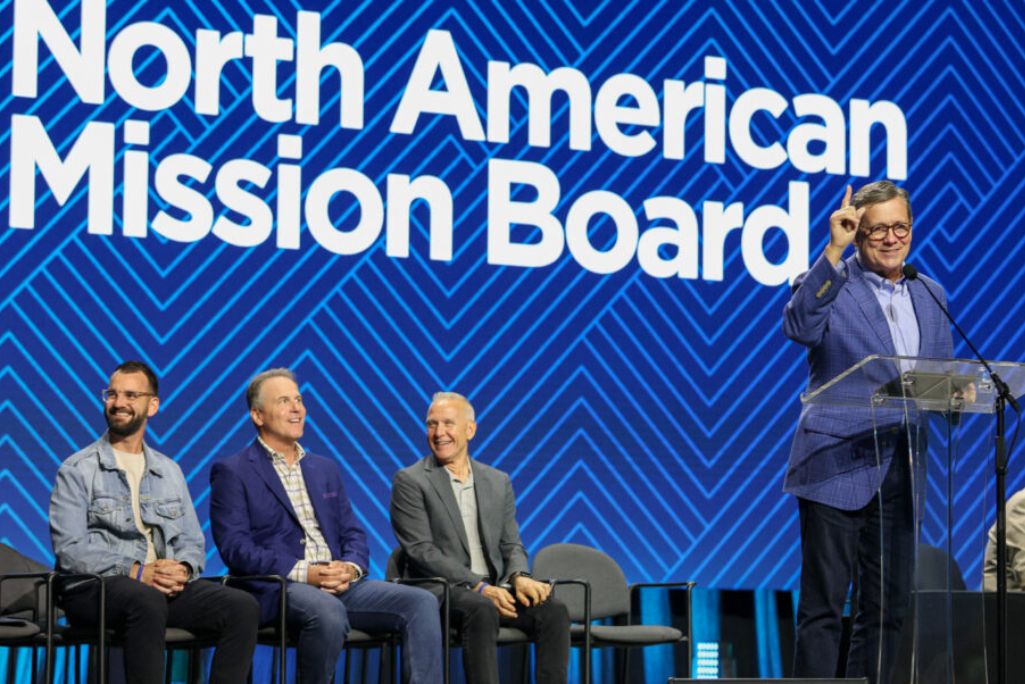
Peter and Tina Kim, new IMB missionaries to São Paulo, Brazil, meet with a local cafe owner to practice language and make relationships.
SÃO PAULO, Brazil — When Peter and Tina Kim arrived in São Paulo, they felt right at home. The new International Mission Board (IMB) missionaries expected a lot of culture shock with their move from Rockville, Md., to South America. Instead, the biggest city in the southern hemisphere felt like moving to an urban area in the United States.
It wasn’t just the shopping malls, traffic and masses of people that felt familiar. It was the melting pot of cultures and religions from an ethnically diverse population. São Paulo is considered the most multicultural city in Brazil. Immigrants from all parts of the world began arriving in 1870 and now, millions of them make up this city of 12 million. The majority are of Asian descent.
“We just blend right in,” Tina said. “Because so many ethnicities are here, everyone assumes you are Brazilian until you start talking.”
Blending in is the point. It’s the São Paulo way, blending cultures together to create community. So, it was only natural for the IMB missionary team serving here to meet this multicultural city with a little diversity of their own.
This team is made up of many different ethnicities, Eric Reese, veteran IMB missionary and São Paulo team leader, explained. But it’s not the only kind of diversity they bring to this city. Their individual cultures, backgrounds, experiences and education help them relate and build trust within the community, allowing them to share the gospel with a natural connection.
Reese used himself as an example of this point. He grew up poor. He understands the poor and can strike up a conversation quickly. In his ministry among the urban poor, his experience gives a starting point in sharing the gospel.
“Diversity gives you strength,” he said. “There are certain things God created you to use for His glory. When we tap into this, the kingdom impact can be immediate and fruitful.”
The plan is to use this type of diversity in all four zones of the city. A missionary couple will live and minister among the Chinese businesses. They are well versed in business practices, and one already speaks Mandarin. So even while they are learning Portuguese, the local language, they will be able to speak on a heart level with the Chinese shop owners.
In another area, young adult missionaries will work with students in the university district. There are even plans for a veteran missionary couple who served in northern Brazil to work in a zone where masses of people from that area have settled in São Paulo.
The Kims will work in a section of the city filled with young professionals and people from the upper class. It is also home to many descendants of Asian Brazilians. These two things will help the Kims blend in. Their professional backgrounds and experience reflect the community. Before moving to Brazil, Peter was a pharmacist.
Also, Tina explained, they are both Korean American with families that immigrated to the United States long before they were born. So, they understand this generation of Brazilians who have blended their parents’ and grandparents’ cultures from Asia with the one they live in.
“We understand what it means to not be 100% of your ethnic background or 100% Brazilian,” Tina said.
“Because of this, we can bridge the gap,” Peter added. “We can come alongside Brazilian churches to help start churches where there is no gospel presence.”
How you can pray
Pray for smooth transitions as new missionaries move from the United States to join this growing São Paulo team.
Ask God to make His vision clear as this unique team uses their diversity to not just start new churches but build up existing ones.
May is Asian American and Pacific Islander (AAPI) Month. The IMB is thankful for the AAPI missionaries who serve around the world with the IMB and for the 2,184 Southern Baptist Asian American congregations in the United States and their partnership with the IMB. Visit imb.org/asian-church-missions to learn more.
(EDITOR’S NOTE — Sue Sprenkle writes for the IMB.)


